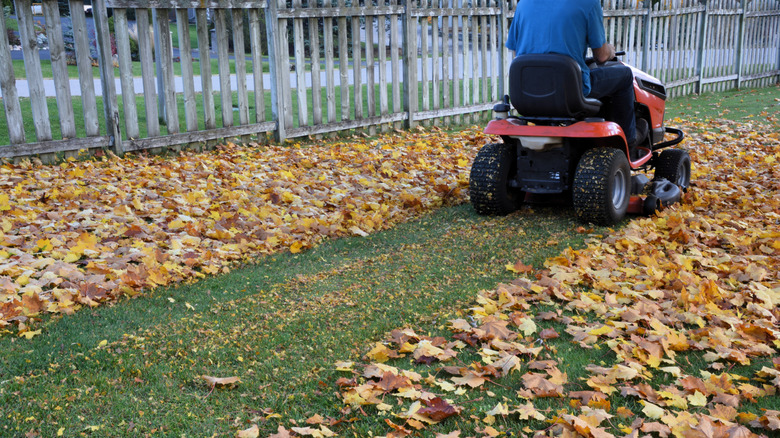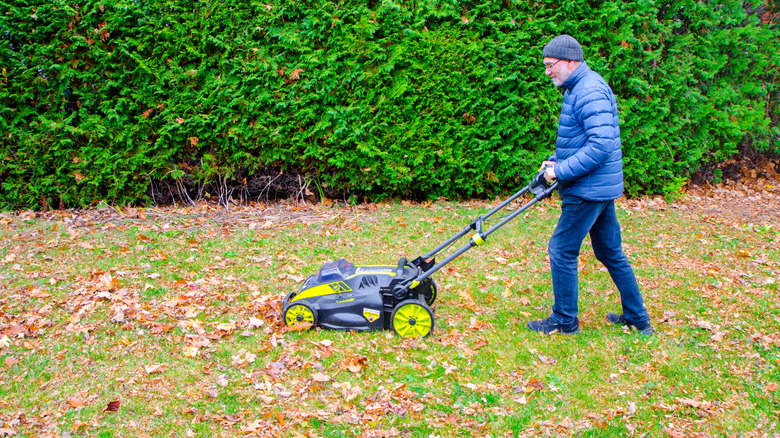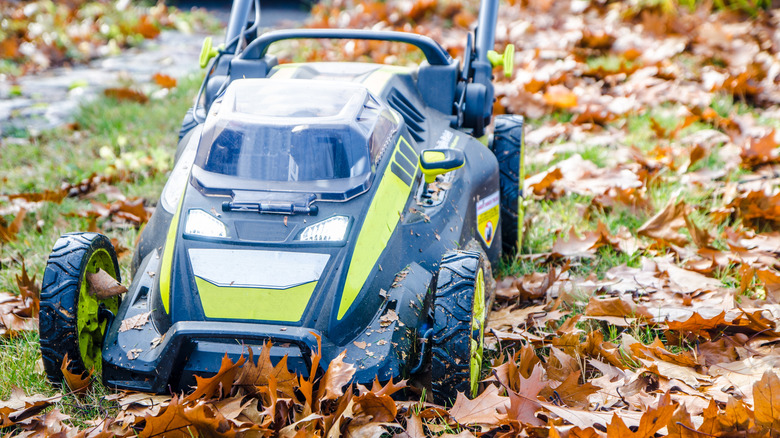The Lawn Mowing Secret To A Healthy Yard This Fall
After meticulously taking care of your lawn all summer, the last thing you want to do is set back all of your hard work by not switching up your maintenance for fall. The autumn season falls in between periods of what can sometimes feel like constant upkeep during summer and little to no care during winter. It's a critical time to prepare your yard for the colder months to help keep it in top condition. With this, the hidden secret to a healthy lawn this fall is to keep the grass around 2 ½ to 3 inches during each mowing before winter. By cutting your grass slightly shorter in the fall, you'll avoid potential matting and fungal disease during the winter while still protecting the roots from damaging weather, setting your lawn up for healthier spring growth.
Another important element when it comes to fall yard maintenance is knowing when to switch from your summer routine to one more suitable for the cooler months. The actual timeframe for when to make this change can depend on several factors, like the area in which you live and the seasonal weather patterns. The general rule of thumb is to continue mowing until the first heavy frost or when temperatures stay consistently low and the grass goes dormant, which could be as early as October or as late as December, depending on the type of grass and your location.
Mowing to the proper length is key for fall lawn maintenance
There are several crucial tips for caring for your lawn during fall, with much of your grass's health relying on appropriate seasonal maintenance. When it comes to a fundamental task like mowing, the optimal length for grass during the fall will depend on your location and climate. Grass types are referred to as cool or warm season grass, with the former being more suitable for cooler climates and the latter thriving in areas of the southern US. In general, you'll want to keep the taller cool season grasses around 2 ½ to 3 inches in height, while some warm season grasses can go as low as 1 ½ to 2 inches before winter.
To determine the ideal length for your grass during your fall cuts, consider its general height during the summer months. If your lawn is usually 3 inches or higher, bring it down to 3 inches or slightly less during your fall mowing sessions. Be sure to never take off more than ⅓ of the height overall in one mow to avoid stress on the grass. It's better to slowly work down the grass over several sessions rather than one massive mow.
Avoid simple mistakes during your fall yard care routine
There are several common mistakes everyone makes when mowing the lawn, like starting in the wrong place or passing over the grass while it's still wet, but the fall season can entail a few unique slipups. One common mishap to avoid is not knowing how to drop the height of your mower for those final cuts. You should always refer to the operation manual before trying to adjust any settings on your lawn mower for not only for lawn health overall, but also for your safety during the process. In addition to turning off the machine before making adjustments, you could also remove the spark plug to prevent any accidents. Then, use the adjustments on the front and back wheels to lower the mower incrementally during the fall, ensuring the deck is level for a cleaner result.
Another common mistake during fall lawn mowing is not following up on your hard work with the supportive steps. Making sure the grass is at an ideal length before frost and freezing temperatures start is crucial, but learning how to winterize your lawn is also helpful. This can include using your last mowing session as an opportunity to mulch leaves or fertilizing to make sure the lawn is fed through the cold months.


